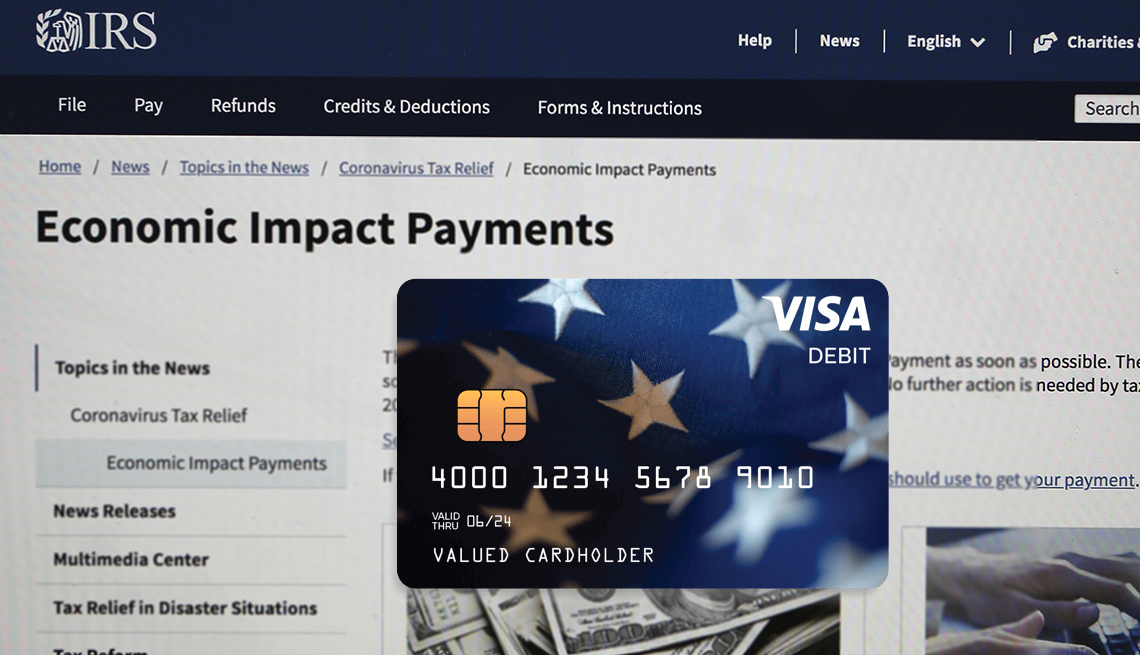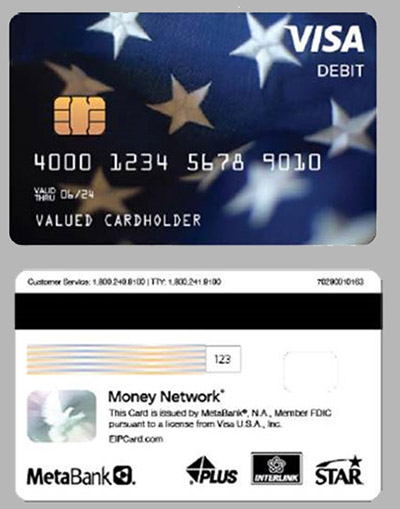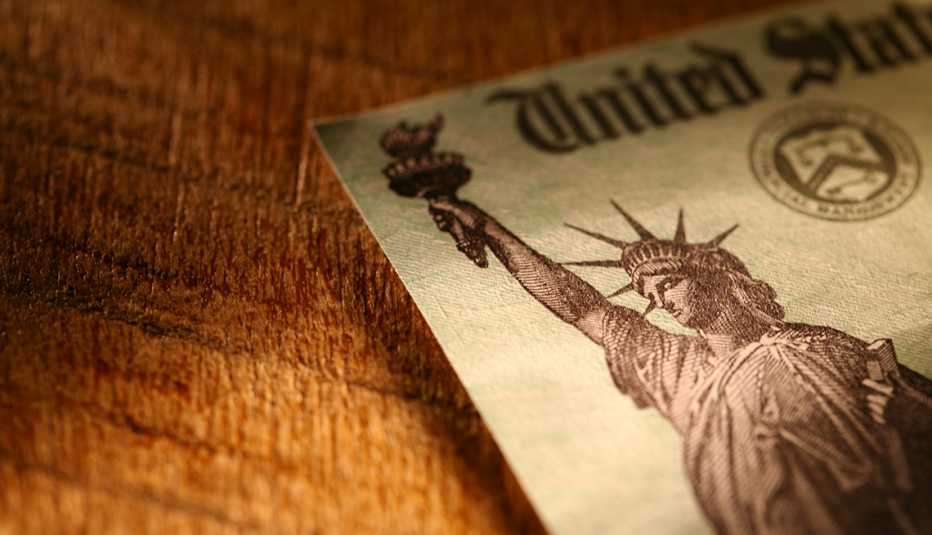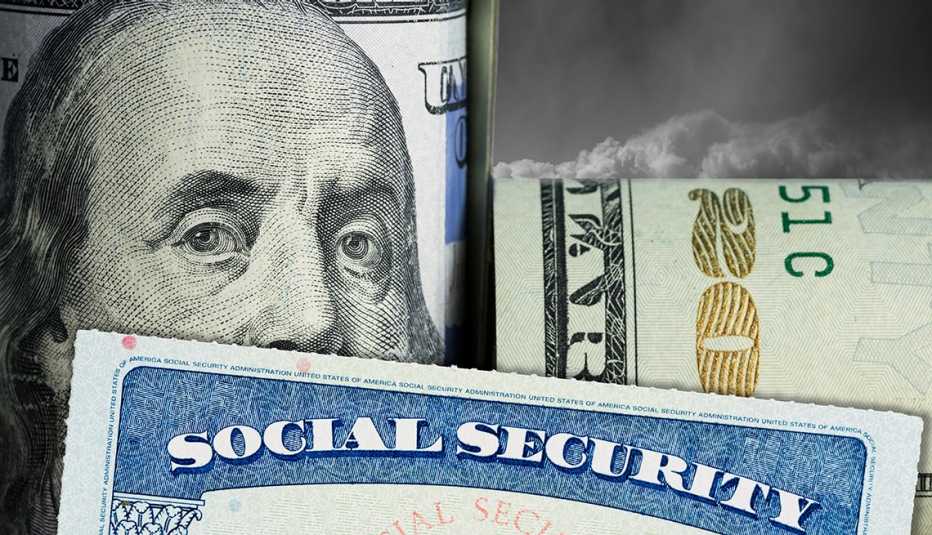AARP Hearing Center
If you didn’t get paper, you may get plastic from the Internal Revenue Service (IRS) as it continues to dole out stimulus payments.
The IRS is sending prepaid debit cards to certain eligible taxpayers who filed tax returns but for whom the IRS doesn’t have bank account information. The stimulus payment is loaded on the debit card.
In some cases, cards (and checks) may be going out to taxpayers who got the first stimulus payment by direct deposit. And in some cases, taxpayers may have moved or changed banks since they got their first stimulus checks. The IRS does not determine who receives a prepaid debit card.
Your Economic Impact Payment (EIP) card will arrive in an envelope from “Money Network Cardholder Services.” Don’t throw it away thinking it’s junk mail or a scam. The Visa name will appear on the front of the EIP card; the back of the card has the name of the issuing bank, MetaBank, N.A., of Omaha, Nebraska. The envelope will also include the Treasury Department seal to help prevent people from throwing it away. Note that you can’t request to receive your stimulus payment by debit card — it either arrives that way or it doesn’t.

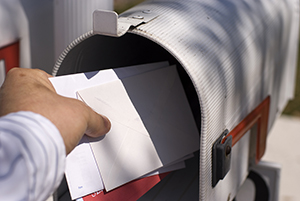
Don’t throw away your stimulus payment by accident
Why would you do that? For one thing, people are rightly suspicious of unsolicited cards received through the mail. In addition, the IRS might send you an EIP card even if its Get My Payment tool says you’ll be receiving a check. AARP has heard from members that some people suspect the cards are a fraud or an unsolicited credit card offer. As a result, some people have shredded them or thrown them away.
Naturally, whenever there’s money involved, there are scammers trying to take it from you. Still, for the 4 million people who receive those EIP prepaid debit cards, the money can be a lifeline in the pandemic. Here’s how to avoid losing your stimulus payment.
- You’ll get a letter with your EIP card telling you how to activate it. Be very careful that you call the phone number correctly. Don’t search the internet for the number. Scammers sometimes set up fake customer service numbers to deceive people and steal their personal information.
- Don’t give your personal identification number (PIN), EIP debit card number or Social Security number to anyone who calls or texts you.
- Check your mail carefully to avoid tossing your EIP card out with your junk mail.
If you’ve destroyed or thrown out your EIP card, don’t panic. Call the toll-free customer service line at 800-240-8100 (TTY: 800-241-9100) to ask for a replacement.
You can find additional information at the official EIP website (EIPCard.com).
AARP’s Fraud Watch Network can help you spot and avoid scams. Sign up for free “watchdog alerts,” review our scam-tracking map, or call our toll-free fraud help line at 877-908-3360 if you or a loved one suspect you’ve been a victim.
How to activate your EIP card
You will get a new EIP card for the latest stimulus round; if you got an EIP card for the previous stimulus, the IRS won’t refill it. Call 800-240-8100 (TTY: 800-241-9100) to activate your new card. You’ll need to provide your name, address and Social Security number. You will also be asked to create a four-digit personal identification number (PIN) required for ATM transactions and automated assistance and to hear your balance. For security, don’t use personal information as your PIN. For cards with more than one name, only the primary cardholder (listed first) may activate the card. There is no charge to activate the card.































































